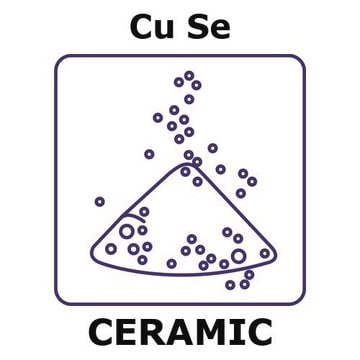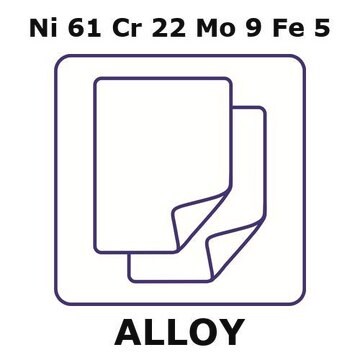GF77882002
Iron
foil, 1m coil, thickness 0.05mm, hard, 99.5%
Sinonimo/i:
Iron, FE000260
Autenticatiper visualizzare i prezzi riservati alla tua organizzazione & contrattuali
About This Item
Formula condensata:
Fe
Numero CAS:
Peso molecolare:
55.85
Numero MDL:
Codice UNSPSC:
12141721
ID PubChem:
NACRES:
NA.23
Prodotti consigliati
Saggio
99.5%
Forma fisica
foil
Produttore/marchio commerciale
Goodfellow 778-820-02
Resistività
9.71 μΩ-cm
Lungh. × spessore
1 m × 0.05 mm
P. eboll.
2750 °C (lit.)
Punto di fusione
1535 °C (lit.)
Densità
7.86 g/mL at 25 °C (lit.)
Stringa SMILE
[Fe]
InChI
1S/Fe
XEEYBQQBJWHFJM-UHFFFAOYSA-N
Descrizione generale
For updated SDS information please visit www.goodfellow.com.
Note legali
Product of Goodfellow
Certificati d'analisi (COA)
Cerca il Certificati d'analisi (COA) digitando il numero di lotto/batch corrispondente. I numeri di lotto o di batch sono stampati sull'etichetta dei prodotti dopo la parola ‘Lotto’ o ‘Batch’.
Possiedi già questo prodotto?
I documenti relativi ai prodotti acquistati recentemente sono disponibili nell’Archivio dei documenti.
Arnold L Demain et al.
Applied microbiology and biotechnology, 73(1), 55-59 (2006-04-20)
When tetanus toxin is made by fermentation with Clostridium tetani, the traditional source of iron is an insoluble preparation called reduced iron powder. This material removes oxygen from the system by forming FeO(2) (rust). When inoculated in a newly developed
Jun-Won Jang et al.
Water science and technology : a journal of the International Association on Water Pollution Research, 59(12), 2503-2507 (2009-06-23)
Zero valent iron has been successfully used for the degradation of a wide range of contaminants. However, this reaction of using ZVI particle produces a large quantity of iron sludge. To solve the problem, we report the synthesis of self-organized
Thomas A Russo et al.
Infection and immunity, 82(6), 2356-2367 (2014-03-26)
Hypervirulent (hypermucoviscous) Klebsiella pneumoniae (hvKP) strains are an emerging variant of "classical" K. pneumoniae (cKP) that cause organ and life-threatening infection in healthy individuals. An understanding of hvKP-specific virulence mechanisms that enabled evolution from cKP is limited. Observations by our
Laura M van Staalduinen et al.
Proceedings of the National Academy of Sciences of the United States of America, 111(14), 5171-5176 (2014-04-08)
The enzymes PhnY and PhnZ comprise an oxidative catabolic pathway that enables marine bacteria to use 2-aminoethylphosphonic acid as a source of inorganic phosphate. PhnZ is notable for catalyzing the oxidative cleavage of a carbon-phosphorus bond using Fe(II) and dioxygen
50 years ago in the Journal of Pediatrics: Iron metabolism in premature infants: II. Prevention of iron deficiency.
Pamela J Kling
The Journal of pediatrics, 164(4), 768-768 (2014-03-22)
Il team dei nostri ricercatori vanta grande esperienza in tutte le aree della ricerca quali Life Science, scienza dei materiali, sintesi chimica, cromatografia, discipline analitiche, ecc..
Contatta l'Assistenza Tecnica.







